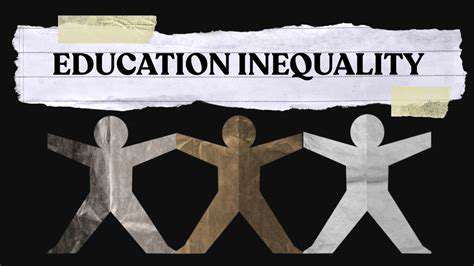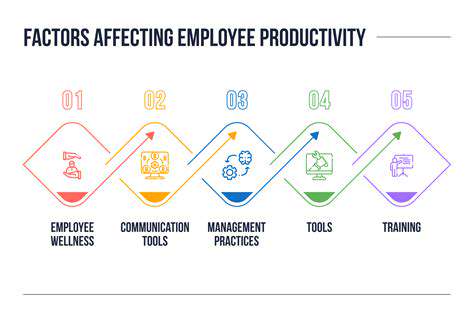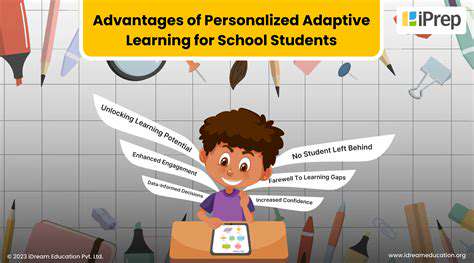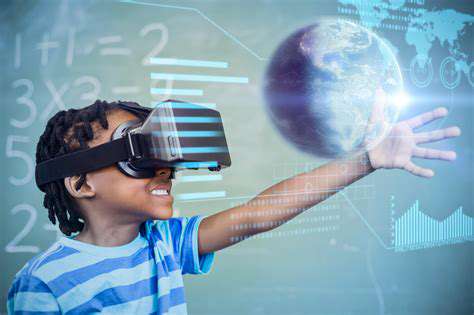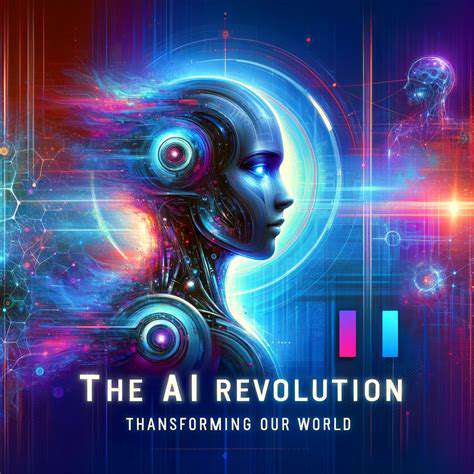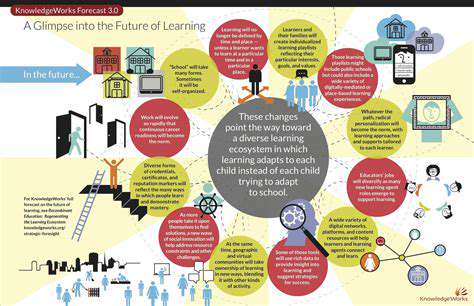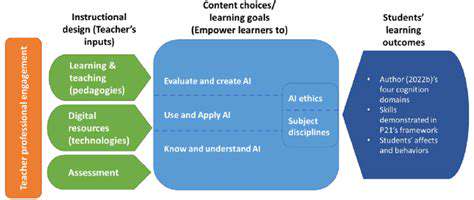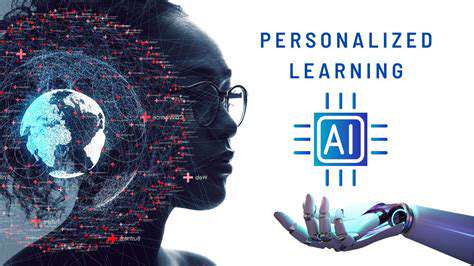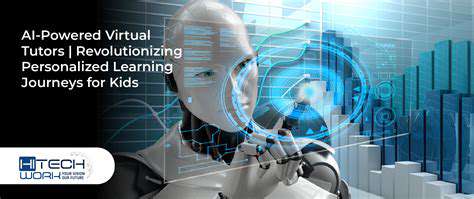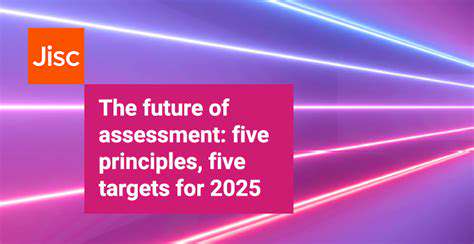From Scientific Visualization to Historical Reenactments: Immersive Learning
Immersive Experiences
Historical reenactments offer more than passive observation - they provide visceral encounters with bygone eras. Through painstaking attention to period-accurate details in dress, speech, and material culture, participants create living snapshots of history. This experiential approach fosters deep emotional connections to historical events and figures, making the past feel immediate and relevant.
The most effective reenactments engage all senses - the texture of historical fabrics, the aroma of period cooking, the acoustics of historical instruments. This multisensory immersion helps break down the psychological distance between present and past, allowing modern audiences to understand history as lived experience rather than dry fact.
Authenticity and Accuracy
Serious historical reenactment demands rigorous research and attention to detail. Practitioners consult primary sources - diaries, inventories, archaeological finds - to reconstruct material culture and social customs with precision. This commitment to authenticity differentiates educational reenactment from theatrical performance.
Yet absolute historical accuracy remains elusive. Gaps in the historical record require educated interpretation, and practical constraints often necessitate compromises. This very imperfection, however, creates valuable opportunities to discuss historical methodology and the limits of our knowledge about the past.
Educational Opportunities
As pedagogical tools, reenactments offer unmatched engagement. Students who might struggle with textbook narratives find themselves captivated by living history demonstrations. The ability to handle replica artifacts, witness historical crafts, or participate in period activities creates memorable learning experiences that traditional methods cannot match.
These immersive encounters stimulate questions and critical thinking in ways that passive learning rarely achieves. By experiencing history rather than just reading about it, students develop more nuanced understandings of past societies and their relevance to contemporary issues.
Preservation of Cultural Heritage
Beyond education, historical reenactment plays a vital role in cultural preservation. By maintaining traditional crafts, cooking methods, and performance arts that might otherwise disappear, reenactors safeguard intangible cultural heritage. Their work ensures that future generations can experience aspects of history that written records alone cannot preserve.
This preservation extends beyond Western traditions. Indigenous communities worldwide increasingly employ reenactment techniques to maintain and share their cultural practices, demonstrating the method's universal value for heritage conservation.
Interactive Learning in the Digital Age: Integrating Scientific and Historical Perspectives
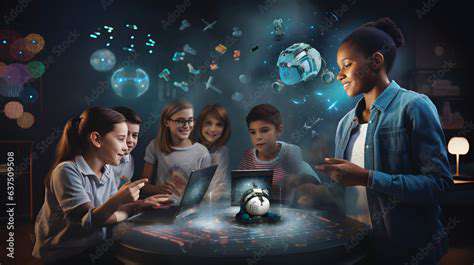
Interactive Learning in Digital Environments
Modern digital learning platforms transform education from passive reception to active participation. These environments leverage multimedia content, adaptive challenges, and real-time feedback to create dynamic learning experiences. Learners become co-creators of knowledge rather than mere recipients. The flexibility of digital platforms allows customization to individual learning speeds and styles, making education more accessible and effective.
Immediate feedback mechanisms help learners identify and address gaps in understanding quickly. This responsive approach contrasts sharply with traditional models where misconceptions might persist until formal assessment. Digital interactivity thus accelerates the learning process while deepening comprehension.
Benefits of Interactive Learning
Interactive methodologies significantly boost learner engagement and knowledge retention. The ability to manipulate variables, test hypotheses, and receive instant results creates powerful aha moments that cement understanding. Active participation in the learning process leads to more durable and applicable knowledge.
These approaches also cultivate essential cognitive skills. Problem-solving, critical analysis, and information synthesis become natural byproducts of interactive learning experiences. Digital platforms can scaffold these skills developmentally, presenting progressively more complex challenges as learner competence grows.
Types of Interactive Learning Activities
The digital learning landscape offers remarkable diversity in interactive formats. Virtual labs allow science students to conduct experiments without physical resources, while historical simulation games let players experience decision-making in past contexts. This variety ensures that learners of all preferences and abilities can find engaging pathways to knowledge.
Collaborative digital projects represent another powerful format, enabling geographically dispersed learners to work together on complex tasks. Such activities not only build subject expertise but also develop crucial teamwork and communication skills for the digital workplace.
Challenges of Interactive Learning
Despite its advantages, digital interactive learning faces significant implementation hurdles. The digital divide in technology access creates equity concerns, as students without reliable devices or internet face exclusion. Ensuring universal access to interactive learning resources remains an ongoing challenge for educational systems worldwide.
Design quality presents another barrier. Effective interactive content requires substantial development resources and expertise in both subject matter and pedagogical design. Poorly conceived interactivity can distract from rather than enhance learning objectives.
Technological Advancements and Interactive Learning
Emerging technologies continue to expand interactive learning possibilities. Artificial intelligence enables truly adaptive learning systems that adjust in real-time to individual needs. Virtual and augmented reality create immersive educational environments previously unimaginable.
AI-powered tutoring systems represent a particularly promising development. These platforms can provide personalized guidance at scale, offering hints, explanations, and encouragement tailored to each learner's demonstrated needs and progress.
The Future of Interactive Learning
As technology evolves, interactive learning will become increasingly sophisticated and accessible. Future systems may incorporate biometric feedback to adjust content based on learner engagement levels or employ advanced simulations indistinguishable from real-world experiences.
The ultimate goal remains creating learning environments that feel less like instruction and more like exploration. In this vision, curiosity and discovery drive the educational process, with technology serving as an enabler rather than the focus. The classrooms of tomorrow may look very different, but their purpose - empowering minds - remains timeless.
The Future of Education: Embracing Immersive Environments
Immersive Learning Experiences: A Paradigm Shift
Education stands on the brink of a transformative shift toward immersive learning technologies. Virtual reality field trips can transport students to ancient Rome or inside a human cell with unprecedented realism. Such experiences don't just convey information - they create memories and emotional connections that traditional methods cannot match.
The power of immersion lies in its ability to make abstract concepts tangible. Quantum physics becomes comprehensible when students can manipulate virtual particles, while historical events gain new meaning when experienced from multiple perspectives within a simulation.
Personalized Learning Paths: Tailoring Education to Individual Needs
The factory model of education, where all students receive identical instruction, is giving way to personalized learning ecosystems. Advanced analytics can identify each learner's strengths, weaknesses, and optimal learning modalities, allowing for truly customized educational experiences.
This individualized approach respects neurodiversity and varied learning paces. Students who grasp concepts quickly can advance without waiting for peers, while those needing more time receive targeted support without stigma. The result is education that adapts to students rather than forcing students to adapt to it.
The Integration of Technology: Seamless Tools for Learning
Educational technology is evolving from supplemental tools to integrated ecosystems. Future classrooms will likely blend physical and digital elements seamlessly, with augmented reality overlays enhancing traditional materials and AI assistants providing just-in-time support.
This integration aims to make technology invisible - not the focus of learning, but a natural facilitator. The goal is to harness digital capabilities without losing the human connections and serendipitous discoveries that make education meaningful.
Data-Driven Insights: Enhancing Teaching Strategies
Learning analytics provide unprecedented visibility into the educational process. Detailed data on student engagement, comprehension patterns, and knowledge retention allow educators to refine their methods with scientific precision.
This evidence-based approach enables continuous improvement at both individual and institutional levels. Teachers can identify which explanations resonate most effectively, while schools can evaluate program efficacy with concrete metrics beyond standardized test scores.
Cultivating Critical Thinking and Problem-Solving Skills
In an era of rapid change, the ability to analyze information, think critically, and solve novel problems becomes more valuable than rote knowledge. Future education must prioritize these transferable skills through project-based learning and authentic challenges.
Immersive technologies offer ideal platforms for such skill development. Virtual scenarios can present complex, open-ended problems without real-world consequences, allowing students to experiment with solutions and learn from failure in a safe environment.
Accessibility and Equity: Ensuring Educational Opportunities for All
As education becomes more technologically mediated, ensuring equitable access grows increasingly critical. Innovative solutions must address not just device distribution, but also connectivity, digital literacy, and culturally responsive content design.
The promise of educational technology lies in its potential to democratize learning, making high-quality education available regardless of geography or socioeconomic status. Realizing this potential requires conscious effort to bridge divides rather than exacerbate them.
Global Collaboration and Cultural Understanding
Digital platforms dissolve geographical barriers, enabling unprecedented global educational collaboration. Students can work on joint projects with peers across continents, gaining intercultural competence alongside academic knowledge.
This global classroom prepares students for an interconnected world where cross-cultural communication and collaboration are essential skills. Virtual exchange programs and multinational learning communities offer glimpses of education's borderless future.
Read more about From Scientific Visualization to Historical Reenactments: Immersive Learning
Hot Recommendations
- The Gamified Parent Teacher Conference: Engaging Stakeholders
- Gamification in Education: Making Learning Irresistibly Fun
- The Future of School Libraries: AI for Personalized Recommendations
- EdTech and the Future of Creative Industries
- Empowering Student Choice: The Core of Personalized Learning
- Building Community in a Hybrid Learning Setting
- VR for Special Education: Tailored Immersive Experiences
- Measuring the True Value of EdTech: Beyond Adoption Rates
- Addressing Digital Divide in AI Educational Access
- Preparing the Workforce for AI Integration in Their Careers
